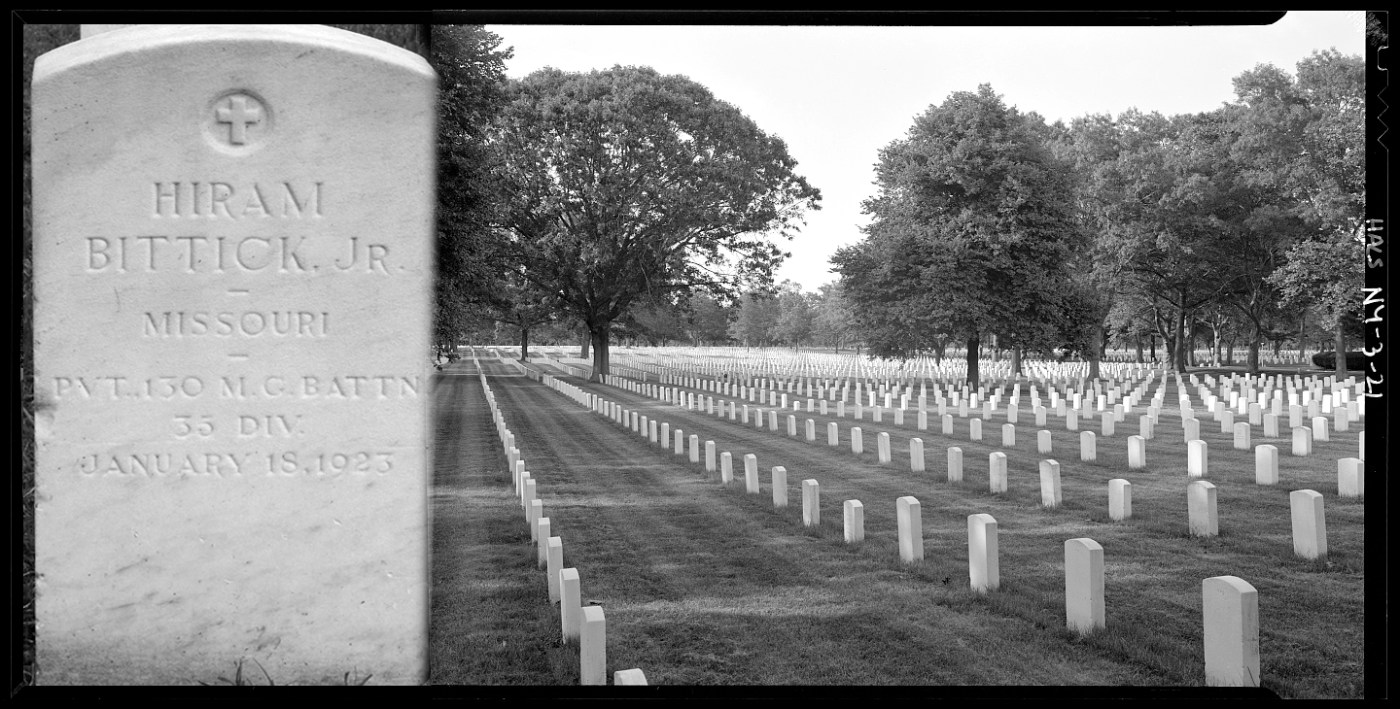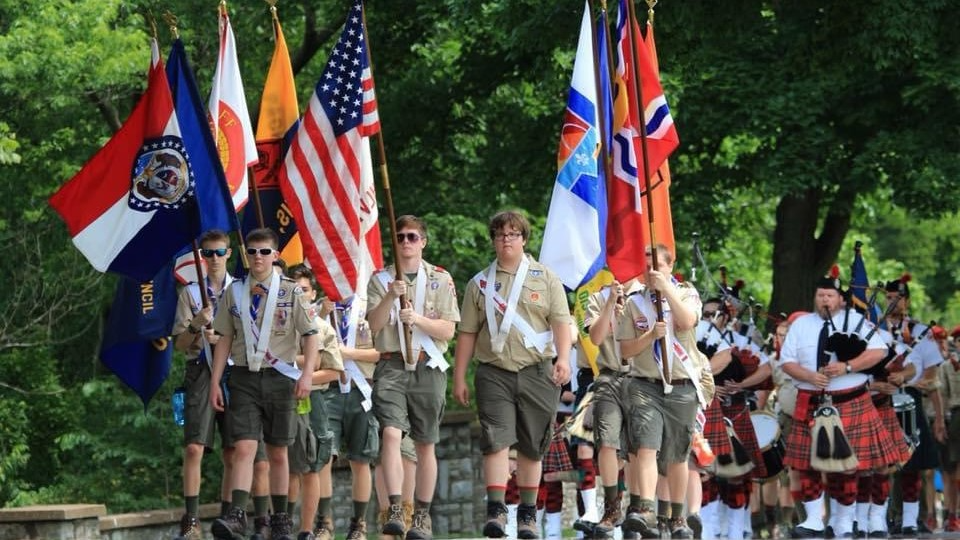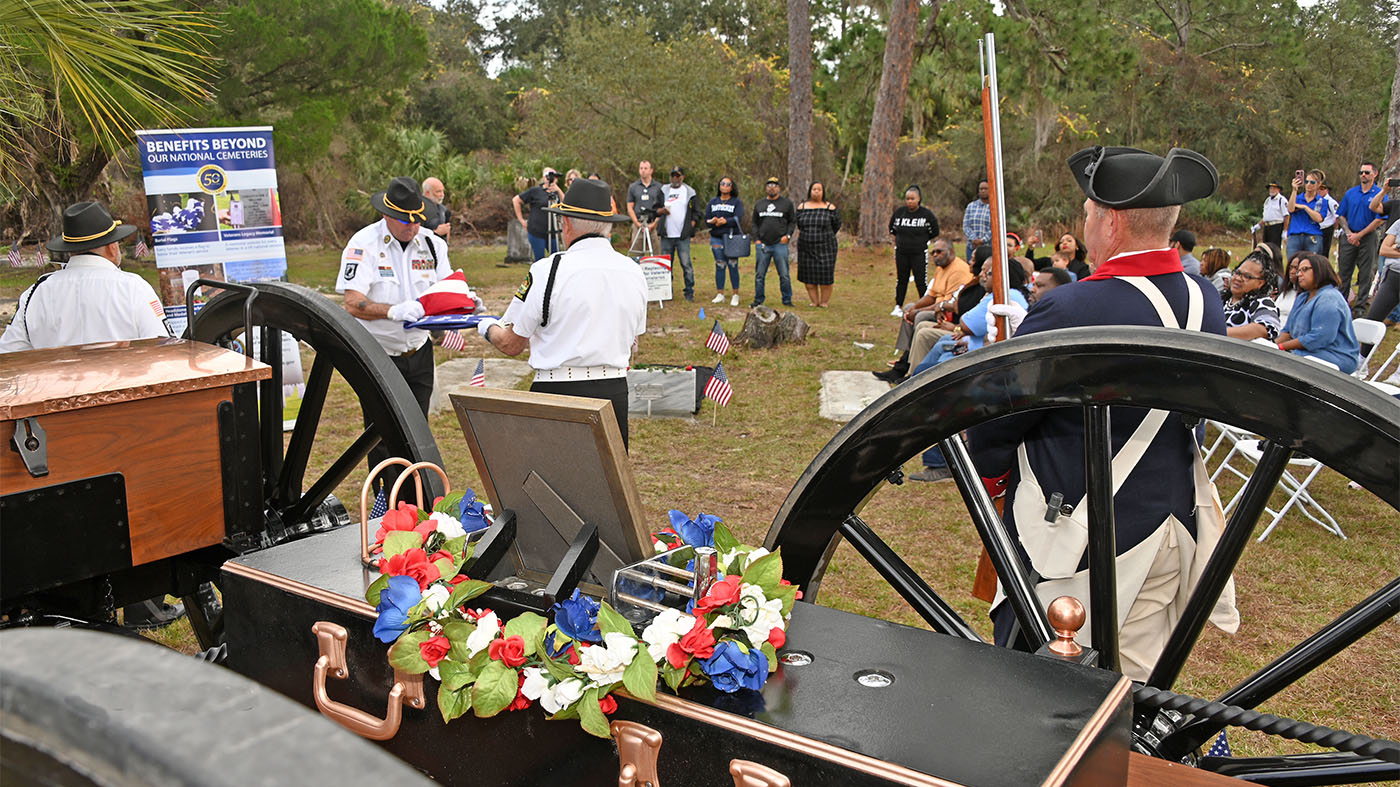
Civil War headstone of army infantryman killed in battle 1864, buried at Cold Harbor National Cemetery, VA
The federal government has redesigned its iconic marble upright headstone only once since it was authorized as a burial benefit for soldiers and sailors killed in the Civil War. On April 26, 1922, a board of officers composed of Assistant Secretary of War J. M. Wainwright, Army Chief of Staff John J. Pershing, and Quartermaster General Harry L. Rogers, adopted a new headstone design for all graves except for those of the Civil War (Union and Confederate) and Spanish-American War, nineteenth-century conflicts still in the minds of many Americans. Graves containing the remains of soldiers repatriated from the Great War – eventually World War I – would be permanently marked with a new marble “General”-style headstone to distinguish modern war service. This headstone also indicated, for the first time, a Veteran’s faith based on two available emblems of belief (EOB) authorized by the government.
Four years had passed since the Great War ended. More than 116,000 bodies needed permanent interment abroad at what would become an American Battle Monuments Commission cemetery near where they perished; or, if the remains were repatriated, stateside at a private or national cemetery. “The question of adoption of a new style of headstone of slab design for graves of all veterans everywhere was under study within the War Department… There were strong protests from the veterans of the Civil and Spanish-American Wars since they had become sentimentally attached to the headstone with the sunken shield.” Despite older Veterans’ opposition a new design was forthcoming

Drawing of smaller, earlier proposed version of General headstone, 1920. National Archives. Record Group 66.
At 230 pounds the marble General is more robust than predecessors, which helps anchor it in the ground. It features the familiar rounded-top but dimensionally it swelled to 42” long, 13” wide, and 4” thick. The change also provided space for an expanded inscription: name, rank, regiment, division, date of birth and death. The first EOB designs, placed at the center top, were raised within a recessed rosette. The two options, a Latin or Roman cross for the Christian faith or a Star of David for the Hebrew faith were, according to the military, “accepted by all members” of the respective faiths. These were the only authorized religious symbols for burial-benefit headstones until after World War II.
It is worth clarifying that some of the United States’ most calamitous wars were not formally identified until well after they ended, names influenced by time and ensuing events. In addition, whereas a conflict or era is inscribed on a headstone today, the first national cemetery visitors looked to the style of a headstone to recognize the decedents’ service. “Civil War” is not inscribed on the headstones of soldiers and sailors who served in 1861-1865, a design approved in 1873. After we entered the Spanish-American War, “SP-AM WAR” was inscribed to the same recessed-shield design to distinguish its decedents and veterans from those of the Civil War. Thus, it was not until October 1946 and after World War II ended, that the Under Secretary of War authorized “World War I” to be inscribed on government-issued grave markers for veterans of the Great War.
More than 4.7 million Americans served in American Expeditionary Forces. NCA’s 136 national cemeteries contain an estimated 300,000 World War I veterans; Long Island National Cemetery, New York, has the most with 65,252. Today, the General headstone remains the standard upright burial benefit provided by the National Cemetery Administration to veterans and eligible family members buried worldwide.
Story by Sara Amy Leach, Senior Historian, National Cemetery Administration
Topics in this story
More Stories
This year marked the 75th year of the 2024 Gravois Trail Memorial Day Good Turn Boy Scout flag placing at every gravesite at Jefferson Barracks National Cemetery.
NCA's Cemetery Restoration Project educates communities about private cemetery owners and the caretakers who honor and memorialize Veterans buried without headstones. The restoration project also restores these private resting places to reflect the dignity and honor these Veterans deserve for their service and sacrifice to our nation.
Rubber Tramp Rendezvous is held annually in January, and it provides an opportunity for those who live a mobile lifestyle—in vehicles such as vans, RVs, and buses—to learn more about the benefits and support available to them.







